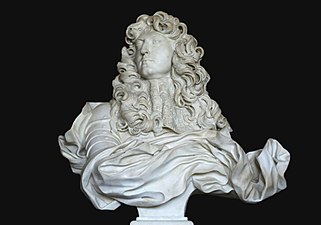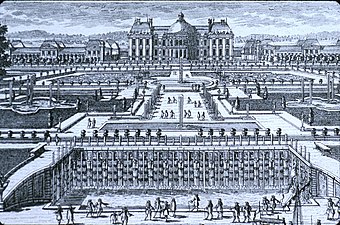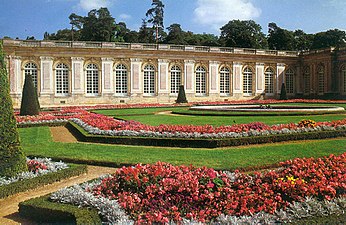Louis XIV style

The Louis XIV style or Louis Quatorze (
The Louis XIV style had three periods. During the first period, which coincided with the youth of the King (1643–1660) and the regency of
Civil architecture
The model of civil architecture in the early part of the reign was
Based on the success of Vaux le Vicomte, Louis XIV selected Le Vau to construct an immense new palace at Versailles, to augment a smaller palace transformed from a hunting lodge by Louis XIII. This gradually became, over the decades, the master work of the Louis XIV style. Following the death of Le Vau in 1680, Jules Hardouin-Mansart took over the Versailles project; he broke away from the picturesque projections and dome and made a more sober and uniform facade of columns, with a flat roof topped by a balustrade and row of columns (1681). He used the same style to harmonize the other new buildings he created at Versailles, including the Orangerie and the Stables. Hardouin-Mansart constructed the Grand Trianon (completed 1687), single-story royal retreat with arched windows alternating with pairs of columns, and a flat roof and balustrade.
Another major new project undertaken by Louis was the construction of a new facade for the
-
Vaux le Vicomte by Louis Le Vau(1658)
-
The (1667–1678)
-
The Grand Trianon by Jules Hardouin-Mansart (1680–1687)
-
Facade of theHotel de Soubise by Pierre-Alexis Delamair(1704–1708)
Religious architecture
In the early period of his reign, Louis began building the church of
The next major church built under Louis XIV was the church of
The finest church interior of the late Louis XIV period is the chapel of the
-
Church of Val de Grace by Louis Le Vau (1645–1710)
-
Eglise Saint-Roch, Paris, by Jacques Lemercier(1653–1690)
-
Hardouin Mansart(1680–1706)
-
Chapel of the Palace of Versailles by Jules Hardouin-Mansart and Robert de Cotte (1689–1710)
The Grand Style: Paris
Though Louis XIV was later accused of having ignored Paris, his reign saw several massive architectural projects which opened up space and ornamented the center of the city. The idea of monumental urban squares surrounded by uniform architecture had begun in Italy, like many architectural ideas of Baroque period. The first such square in Paris was the Place Royal (now Place des Vosges) begun by Henry IV of France, completed later with an equestrian statue of Louis XIII; then the Place Dauphine on the Île de la Cité, which featured, adjacent to it, an equestrian statue of Henry IV. The initial grand Paris projects of Louis XIV were new facades on the Louvre, especially the Colonnade, facing to the east. These were showcases of the new monumental style of Louis XIV. The old brick and stone of the Henry IV squares was replaced by the Grand Style of monumental columns, which usually were part of the facade itself, rather than standing separately. All the buildings around the square were connected and built to the same height, in the same style. The ground floor featured a covered arcade for pedestrians.[6]
The first such complex of buildings built under Louis XIV was the Collège des Quatre-Nations (now the Institut de France) (1662–1668), facing the Louvre. It was designed by Louis Le Vau and François d'Orbay, and combined the new college donated by Mazarin, a chapel, and the library of Cardinal Mazarin. (Later, as the Institute of France, it would become the headquarters of the academies founded by the King.) The Hôtel Royal des Invalides – a complex for war veterans consisting of residences, a hospital, and a chapel – was constructed by Libéral Bruant and Jules Hardouin-Mansart (1671–1679). Louis XIV then commissioned Mansart to construct a separate private royal chapel featuring a striking dome, the Église du Dôme, which was added to complete the complex in 1708.
The next major project was the Place des Victoires (1684–1697), a real estate development of seven large buildings in three segments around a circular square, with a standing figure statue of Louis XIV (later replaced with an equestrian statue) planned for the centerpiece. This was built by an enterprising entrepreneur and nobleman of the court, Jean-Baptiste Prédot, combined with the architect Jules Haroudin-Mansart. The final urban project became the best-known, the Place Vendôme, also by Harouin-Mansart, between 1699 and 1702. Its centerpiece was an equestrian statue of Louis XIV (later replaced with a statue of Napoleon atop the Vendome Column). In another innovation, this project was partially financed by the sale of lots around the square. All of these projects featured monumental facades in the Louis XIV style, giving a particular harmony to the squares.[7]
-
Place des Victoires (1684–1697) by Jules Hardouin-Mansart
-
Place Vendôme (1699–1702) by Jules Hardouin-Mansart
-
Court of Honor of Les Invalides (1671–1706)
Interior decoration
In the early Louis XIV style, the principle characteristics of decor were a richness of materials and an effort to achieve a monumental effect. The materials used included marble, often combined with multicolor stones, bronze, paintings, and mirrors. These were inserted into an extremely framework[further explanation needed] of columns, pilasters, niches, which extended up the walls and up upon the ceiling. The doors were surrounded with medallions, frontons and bas-reliefs. The fireplaces were smaller than those during the Louis XIII era, but more ornate, with a marble shelf supporting vases, below a carved frame with a painting or mirrors, all surrounded by a thick border of carved leaves or flowers.
Decorative elements on the walls of the early Louis XIV style were usually intended to celebrate the military success, majesty and cultural achievements of the King. They often featured military trophies, with helmets, oak leaves symbolizing victory, and masses of weapons, usually made of glided bronze or sculpted wood, in relief surrounded by marble. Other decorative elements celebrated the King personally: the head of the King was often represented as the sun god
The Hall of Mirrors of the Palace of Versailles (1678–1684) was the summit of the early Louis XIV style. Designed by Charles Le Brun, it combined a richness of materials (marble, gold, and bronze) which reflected in the mirrors.
In the late Louis XIV period, after 1690, new elements began to appear, that were less militaristic and more fantastic; particularly seashells, surrounded by elaborate sinuous lines and curves; and exotic designs, including
-
Early Louis XIV style; the Salon de Vénus at the Palace of Versailles by Charles Le Brun
-
Hall of Mirrors at Palace of Versailles by Charles Le Brun (1678–1684)
-
Bedchamber of the Queen, Palace of Versailles
Furniture
During the first period of the reign of Louis XIV, furniture followed the previous style of Louis XIII, and was massive, and profusely decorated with sculpture and gilding. After 1680, thanks in large part to the furniture designer
New and often enduring types of furniture appeared; the commode, with two to four drawers, replaced the old coffre, or chest. The canapé, or sofa, appeared, in the form of a combination of two or three armchairs. New kinds of armchairs appeared, including the fauteuil en confessionale or "confessional armchair", which had padded cushions on either side of the back of the chair. The console table also made its first appearance; it was designed to be placed against a wall. Another new type of furniture was the table à gibier, a marble-topped table for holding dishes. Early varieties of the desk appeared; the Mazarin desk had a central section set back, placed between two columns of drawers, with four feet on each column.[10]
-
Commode byAndré Charles Boulle for the Grand Trianon(1710)
-
Early Mazarin desk
-
Desk of Nicolas Fouquet at the Chateau of Vaux-le-Vicomte
-
Sofa and chairs à la reine (1710–1720), Louvre Museum
Ceramics
After about 1650,
In 1663 Colbert, recently made
The French faience industry received another huge boost when, late in Louis's reign in 1709, the king pressured the wealthy to donate their silver plate, previously what they normally used to dine, to his treasury to help pay for his wars. There was an "overnight frenzy" as the elite rushed to get faience replacements of the best quality.[14]
The reign also saw the earliest French porcelain in Rouen porcelain, although production was on a tiny scale; only nine small pieces are thought to survive.[15] The next factory, Saint-Cloud porcelain, from perhaps 1695 onwards, was more successful,[16] though it was only in the following reign that French porcelain was produced in quantity.
-
Rape of Europa, after an illustration of Ovid by François Chauveau, published in 1674
-
Nevers wine-cooler with The Drunkenness of Bacchus, c. 1680
-
Nevers pair of wine jugs, c. 1685, 56 cm high. François Chauveau's Rape of Europa is again used (left).
-
Large Nevers ewer with dancing bacchantes and satyrs, 1685
-
pot pourri jar, Metropolitan Museum of Art, 5 in (12.7 cm) tall.[17]
Painting
In the first part of the reign, French painters were largely influenced by the Italians, particularly
With the death in 1661 of
The major painters of the later reign of Louis XIV included Hyacinthe Rigaud (1659–1743) who came to Paris in 1681, and attracted the attention of LeBrun. LeBrun oriented him toward portrait painting, and he made a celebrated portrait of Louis XIV in 1701, surrounded by all the attributes of power, from the crown on the table to the red heels of his shoes. Rigaud soon had an elaborate workshop in place for making portraits of the nobility; he employed specialized artists to create the costumes and draperies, and others to paint the backgrounds, ranging from battlefields to gardens to salons, while he concentrated on the composition, colors and especially the faces.[18]
In his final years, Louis XIV's tastes changed again, under the influence of his morganic wife,
-
The Card Sharp with the Ace of Diamonds by Georges de La Tour (late 1630s)
-
Section of theVersailles, representing capture of fortress of Ghent by Louis XIV, by Charles Le Brun(1678)
-
Portrait of Louis XIV by Hyacinthe Rigaud, (1701)
Sculpture
The most influential sculptor of the period was the Italian Gian Lorenzo Bernini, whose work in Rome inspired sculptors all over Europe. He traveled to France; his proposal for a new facade of the Louvre was rejected by the King, who wanted a more specifically French style, but Bernini did make a bust of Louis XIV in 1665 which was greatly admired and imitated in France.
One of the most prominent sculptors under Louis XIV was
Another notable sculptor of the Style Louis XV was
-
Caryatids of Louvre by Jacques Sarazin
-
Bust of Louis XIV byBernini (1665), now in Palace of Versailles
-
The King's Fame riding Pegasus, by Antoine Coysevox, made for Marly, now in the Louvre. (1702)
-
Louis XIV by Coysevox, now at Musée Carnavalet
-
Jean Baptiste Colbert by Antoine Coysevox
-
Perseus and Andromeda by Pierre Puget (Louvre)
Tapestries
In 1662
The themes and styles of the tapestry were largely similar to the themes in the paintings of the period, celebrating the majesty of the King and triumphal scenes of military victories, mythological and pastoral scenes. While at first they were made only for use of the King and nobility, the factory soon began exporting its products to the other courts of Europe.
The royal Gobelins manufactory had competition from two private enterprises, the Beauvais Manufactory and the Aubusson tapestry workshop, which produced works in the same style but with a low-warp process, with slightly lesser quality. Jean Bérain the Elder, the royal draftsman and designer of the King, created a series of grotesque carpets for Aubusson. These tapestries sometimes celebrated contemporary themes, such as a work designed by Aubusson An late 17th to early 18th century tapestry done by the Beauvais Manufactory depicting Chinese astronomers at the Beijing Ancient Observatory using new more accurate instruments brought to them by Europeans (Jesuits) which were installed in 1644.
-
Louis XIV visits the Gobelins with Colbert, design by Charles Le Brun (between 1667 and 1672)
-
Louvre Museum.
-
One of a set of five "Grotesques" by Jean Bérain from the Beauvais Manufactory (woven 1690–1711)
-
Jesuitmission to China (1697–1705)
Design and spectacle
In the early years of the King's reign, the most important public royal ceremony was the
The ceremonial entry of the King into Paris also became an occasion for festivities. The return of Louis XIV and Queen Marie-Thérèse to Paris after his coronation in 1660 was celebrated by a grand event on a fairground at the gates of the city, where large thrones were constructed for the new monarchs. After the ceremony the site became known as the Place du Trône, or place of the Throne, until it became the Place de la Nation in 1880.[25]
An office existed in the royal household of Louis XIV called
In addition to interior decoration, he designed the costumes and scenery for the royal theaters, including for the opera
-
Louis XIV in the Grand Carousel of 1662
-
Arabesque designs by Jean Bérain the Elder
-
Bérain Set design for opera Amadis by Jean-Baptiste Lully (1684)
-
Bérain design for transom of the warship Soleil Royal named for Louis XIV (1670)
The garden à la française
One of the most enduring and popular forms of the Style Louis XIV is the jardin à la française or French formal garden, a style based on symmetry and the principle of imposing order on nature. The most famous example is the Gardens of Versailles designed by André Le Nôtre, which inspired copies all across Europe. The first important garden à la française was the Château of Vaux-le-Vicomte, created for Nicolas Fouquet, the superintendent of finances to Louis XIV, beginning in 1656. Fouquet commissioned Louis Le Vau to design the chateau, Charles Le Brun to design statues for the garden, and André Le Nôtre to create the gardens. For the first time the garden and the chateau were perfectly integrated. A grand perspective of 1500 meters extended from the foot of the chateau to the statue of the Hercules of Farnese; and the space was filled with parterres of evergreen shrubs in ornamental patterns, bordered by colored sand, and the alleys were decorated at regular intervals by statues, basins, fountains, and carefully sculpted topiaries. "The symmetry attained at Vaux achieved a degree of perfection and unity rarely equalled in the art of classic gardens. The chateau is at the center of this strict spatial organization which symbolizes power and success."[28]
The Gardens of Versailles, created by André Le Nôtre between 1662 and 1700, were the greatest achievement of the French formal garden. They were the largest gardens in Europe, with an area of 15,000 hectares, and were laid out on an east–west axis followed the course of the sun: the sun rose over the Court of Honor, lit the Marble Court, crossed the Château and lit the bedroom of the King, and set at the end of the Grand Canal, reflected in the mirrors of the Hall of Mirrors.[29] In contrast with the grand perspectives, reaching to the horizon, the garden was full of surprises: fountains, small gardens filled with statuary, which provided a more human scale and intimate spaces. The central symbol of the garden was the sun; the emblem of Louis XIV, illustrated by the statue of Apollo in the central fountain of the garden. "The views and perspectives, to and from the palace, continued to infinity. The king ruled over nature, recreating in the garden not only his domination of his territories, but over the court and his subjects."[30]
-
17th-century engraving of gardens of Vaux-le-Vicomte
-
Gardens of the Palace of Versailles
-
The Bassin d'Apollon in the Gardens of Versailles
-
Parterres of the Versailles Orangerie
-
Gardens of the Grand Trianon at the Palace of Versailles
See also
Notes
- ^ Ducher, Robert, Caractéristique des styles (1988), p. 120
- ^ Renault and Lazé, Les Styles de l'architecture et du mobilier (2006), Editions Jean-Paul Gisserot, Paris (in French), pp. 54–55.
- ^ Ducher 1988, p. 120.
- ^ Ducher 1988, p. 122.
- ^ a b c Ducher 1988, p. 124.
- ^ Texier, Simon (2012), pp. 38–39
- ^ Texier, Simon (2012), pp. 38–39.
- ^ Ducher 1988, pp. 126–129.
- ^ Renault and Lazé, Les Styles de l'architecture et du mobilier (2006), pg. 59
- ^ Renault and Lazé, Les Styles de l'architecture et du mobilier (2006), p. 59
- ^ McNab, 20–21; Moon; V&A, Nevers Jardiniere
- ^ Pottier, 12
- ^ Moon; McNab, 22
- ^ Moon; McNab, 30
- ^ Munger & Sullivan, 135–137
- ^ Munger & Sullivan, 138–142
- ^ Munger & Sullivan, 135–137
- ^ a b Bauer & Prater 2016, p. 16.
- ^ cited in Bauer and Prater, Baroque (2016), p. 86.
- ^ Bauer & Prater 2016, p. 86.
- ^ "Coysevox, Charles Antoine". Chisholm, Hugh (ed., 1911). Encyclopedia Britannica (11th ed.). 1911. pp. 355–56
- ^ "Puget, Pierre". Chisholm, Hugh (ed., 1911). Encyclopedia Britannica (11th ed.). 1911. p. 637
- ^ "Gobelin". Chisholm, Hugh (ed., 1911). Encyclopedia Britannica (11th ed.). 1911. p. 165
- ^ Fierro 1996, p. 754.
- ^ Dictionnaire historique de Paris 2013, p. 272.
- ^ "Bérain, Jean". Chisholm, Hugh (ed.). Encyclopedia Britannica (11th ed.). 1911.
- ^ "Bérain, Jean". Chisholm, Hugh (ed.). Encyclopedia Britannica (11th ed.). 1911.
- ^ Prevot, Histoire des jardins, p. 146
- ^ Prevot, Histoire des jardins, p. 152
- ^ Lucia Impelluso, Jardins, potagers et labyrinthes, p. 64.
References
- Yves-Marie Allain and Janine Christiany, L'art des jardins en Europe, Citadelles et Mazenod, Paris, 2006
- Bauer, Hermann; Prater, Andreas (2016), Baroque (in French), Cologne: Taschen, ISBN 978-3-8365-4748-2
- Cabanne, Perre (1988), L'Art Classique et le Baroque, Paris: Larousse, ISBN 978-2-03-583324-2
- Ducher, Robert (1988), Caractéristique des Styles, Paris: Flammarion, ISBN 2-08-011539-1
- Fierro, Alfred (1996). Histoire et dictionnaire de Paris. Robert Laffont. ISBN 2-221--07862-4.
- Impelluso, Lucia,Jardins, potagers et labyrinthes, Hazan, Paris, 2007.
- McNab, Jessie, Seventeenth-Century French Ceramic Art, 1987, Metropolitan Museum of Art, ISBN 0870994905, 9780870994906, google books
- Moon, Iris, "French Faience", in Heilbrunn Timeline of Art History, 2016, New York: The Metropolitan Museum of Art, online
- Munger, Jeffrey, Sullivan Elizabeth, European Porcelain in The Metropolitan Museum of Art: Highlights of the collection, 2018, Metropolitan Museum of Art, ISBN 1588396436, 9781588396433, google books
- Pottier, André, Histoire de la faïence de Rouen, Volume 1, 1870, Le Brument (Rouen), google books (in French)
- Prevot, Philippe (2006), Histoire des jardins (in French), Paris: Editions Sud Ouest
- Renault, Christophe (2006), Les Styles de l'architecture et du mobilier, Paris: Gisserot, ISBN 978-2-877-4746-58
- Texier, Simon (2012), Paris- Panorama de l'architecture de l'Antiquité à nos jours, Paris: Parigramme, ISBN 978-2-84096-667-8
- Wenzler, Claude, Architecture du jardin, Editions Ouest-France, 2003
- Dictionnaire Historique de Paris. Le Livre de Poche. 2013. ISBN 978-2-253-13140-3.










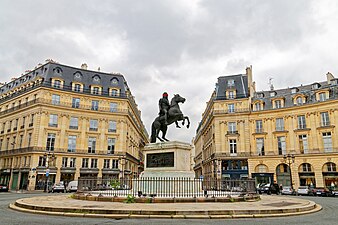



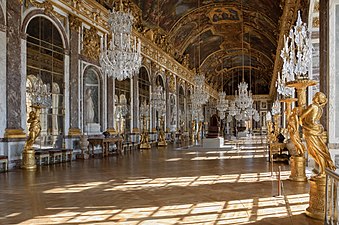



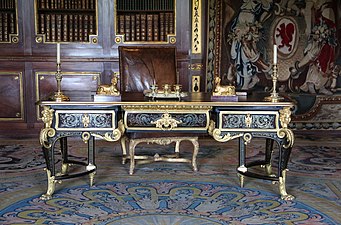

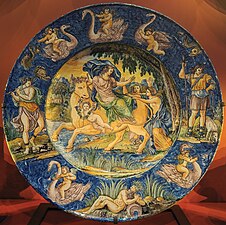



![Rouen porcelain, pot pourri jar, Metropolitan Museum of Art, 5 in (12.7 cm) tall.[17]](http://upload.wikimedia.org/wikipedia/commons/thumb/1/14/Potpourri_jar_MET_DP156491_%28cropped%29.jpg/224px-Potpourri_jar_MET_DP156491_%28cropped%29.jpg)





